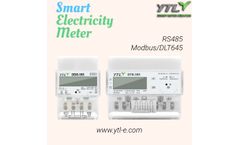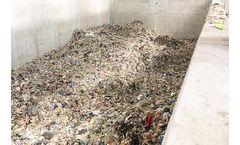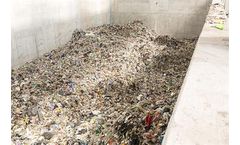Waste Monitoring Articles & Analysis: Older
12 articles found
Soil Enhancement: The porous structure of biochar improves soil health by promoting microbial activity, enhancing nutrient retention, and reducing the need for chemical fertilizers. Waste Management: By utilizing agricultural residues, forestry waste, and other organic materials, biochar production reduces landfill waste and promotes a circular ...
Accuracy is a critical technical parameter, typically requiring a level of accuracy of 1.0 or higher. 2. Real-time Monitoring: The energy meter should be able to monitor energy consumption in real-time, including voltage, current, power, and power factor parameters. Real-time monitoring helps detect energy waste and unusual ...
Gas Monitoring for Waste Gasification For detecting both oxidation gas concentrations and the chemical composition of syngas, Edinburgh Sensors offer a range of non-dispersive infra-red sensing instruments suitable for highly sensitive online monitoring of gases such as carbon monoxide and dioxide. ...
Frequent services will keep your fleet vehicles running optimally, and when they're in top condition, they're less likely to waste fuel. Monitor your team's speedA lead foot isn't good for fuel-efficiency. ...
INVIZION made history recently as the first blockchain company to be presented at the United Nations Global Compact, a global event organized by the United Nations General Assembly on 22 September 2020. INVIZION, a technology company that aims to address the global waste problem through their revolutionary waste tracking blockchain-based solutions, has announced that it is conducting a second ...
Waste gasification is a type of waste to energy process where waste material is used as a fuel to create heat, electricity or other chemical products. Specifically, in waste gasification, the waste material is decomposed in such a way to produce gaseous products, often known as syngas, a combination of hydrogen, ...
Project Location: Zhejiang Province, China Capacity: 100,000 m³/d Model: 1 unit of RizonSDI Automatic SDI Monitor - Waste Water ...
Waste biomass from the industrial production of the amino acid L-cystine contains above-average concentrations of organic pollutants and significant concentrations of nitrogen and sulfur. The specific biogas production (SBP) of waste biomass was monitored in parallel suspended-growth laboratory anaerobic bioreactors. ...
The Environment Agency (EA) oversees how the sites dispose of their radioactive waste by granting site authorisations to the operators who run them. These authorisations set out limits and conditions on the amount and way they dispose of their waste and cover all radioactive waste disposals including discharges to air and water, and transfers of ...
Overview: Single site, multi-user implementation of EPOCH’s Hazardous Waste Management module for tracking waste and printing 1000s of hazardous waste manifests and labels throughout the US per year. With EPOCH, users track waste detail, including; generators, profiles, vendors and costs as well as manifest detail and dates for their 25 day return period. RCRA or Annual Waste Summary reporting is ...
The US Environmental Protection Agency (EPA), as well as other regulatory agencies around the world, have established limitation guidelines for discharges of “oily wastes” from facilities utilizing any type of oil and grease in their manufacturing process. ...
No correlation could be established between the chemical composition of the wastes and their toxicity. Each of the three pharmaceutical plants had an own toxicity spectrum, reflecting the different types of chemicals produced as well as the different treatment procedures of the effluents. The information generated once again confirms that in addition to chemical ...












